Conference Archives
MOVIC & RASD 2016
University of Southampton
Highfield Campus,
University Road,
SO17 1BJ
Southampton, GB
July 3, 2016 – July 6, 2016
Registration
Registration will be available between 17:00 and 19:00 on Sunday 3 July and between 08:00 and 10:00 on Monday 4 July in Building 40 (Garden Court). Please use the stairs at the back of the building and follow the signs to the registration desk.
Final Programme
Update: The final programme is now available to view by clicking here.
Joining Instructions
Information Regarding the Technical Sessions
Presenters of Contributed Papers
Each oral presentation is allocated 15 minutes, subdivided as follows:
- 12 minutes for presentation (including conclusions)
- 3 minutes for questions and moving to the next presenter (to include changing the presentation and for the chair to announce the new presenter)
Each room will have a data projector and a computer running Windows 10, with Microsoft Powerpoint 2016 and Adobe Reader DC installed. Presentations should be on a USB memory stick. Presenters are asked to upload their presentation before the sessions starts and to meet the session chair in the room at least 10 minutes before the session is due to begin. Presenters can load their presentations at the information desk in Building 40 (Garden Court) or directly onto the computer in the room in which they will be presenting at any time during a break before the presentation. If a presenter would prefer to use their own laptop, VGA, HDMI and mini display port connections will be provided. Please ensure that the laptop is tested with the AV equipment during the break before the start of the session.
Information for Session Chairs
15 minutes has been timetabled for each oral presentation in the parallel sessions: 12 minutes plus 3 minutes for questions and changeover. Please adhere strictly to these time limits. A student helper will be present to provide support for the AV equipment.
Poster Presenters
The poster session will take place between 12:30 and 14:00 in Building 40 (Garden Court). The display boards are A1 portrait format (59.4 x 84.1 cm) and there is no specific template for the format of the posters. Please be aware there is no on-site printing facility and each presenter is expected to bring their printed poster to the session. The poster should be affixed to the display board before the start of the session with the adhesive strips provided at each stand. The presenter is kindly asked to have a short lunch and remain next to their poster.
Registration
To register for the conference please click here. You will be need to log into your conference account, specify the registration type, and specify if you will present more than one paper. Please leave the Fee Code box blank, specify any dietary requrements or access requirements and then click 'Register' to proceed to the payment screen.
Fees | |
|---|---|
| Full Early Bird Registration | £450 |
| Full Late Registration | £550 |
| Student Early Bird Registration | £300 |
| Student Late Registration | £350 |
| Additional Paper Fee | £50 |
Registration will include the book of abstracts, the proceedings on a pen drive, a unilink bus pass for the duration of the conference, light refreshments, lunches, an evening BBQ and the conference dinner at Beaulieu National Motor Museum.
Objectives of the Conference
The conference aims to bring together researchers and practising engineers from different branches of engineering to discuss recent advances in theoretical and experimental techniques for solving problems in control, structural dynamics and dynamical systems.
Who Should Attend
Research workers and engineers involved in any area of motion and vibration control, structural dynamics and dynamical systems.
Conference Themes
Papers are invited in any area of vibration control and structural dynamics.
| MOVIC | RASD |
|---|---|
| Vehicle Dynamics and Control | Active vibration control and smart structures |
| Robot Dynamics and Control | Analytical methods |
| Control of Civil Infrastructures | Biomechanics and Human structure interaction |
| Model-Driven Systems Development | Civil Engineering Structures |
| Smart Structures and Control | Energy methods |
| Smart Sensors and Sensor Network | Experimental techniques |
| Control of Micro and Nano Structures | Fluid- structure interaction |
| Structural Acoustics and Noise Control | Impulse loading and impact dynamics |
| Energy Management and Eco Systems | Modal analysis and structural modification |
| Energy Harvesting | Nonlinear vibrations |
| Control of Fluid/Structure Interaction | Numerical methods |
| Damage Detection and Structural Health Monitoring | Railway induced vibration |
| Dynamics and Control of Multibody Systems | Stochastic dynamics and random vibrations |
| Intelligent Transport Systems | Structural health monitoring |
| Active Safety Systems | System identification and inverse problems |
| Control Technology for Tele-Operation Systems | Uncertain dynamical systems |
| Human-Machine Interface | Vehicle dynamics |
| System Identification and Modeling | Vibro-acoustics |
| Control Theory | Wind Engineering |
| Control Devices | |
| Sensors and Actuators | |
| Active Safety Systems |
Organising Committee |
|---|
| N. S. Ferguson, University of Southampton, UK (Chair) |
| E. Rustighi, University of Southampton, UK (Chair) |
| E. Bonisoli, Politecnico di Torino, Italy |
| M. J. Brennan, Universidade Estadual Paulista, Brazil |
| P. Forte, University of Pisa, Italy |
| M. Ghandchi Tehrani, University of Southampton, UK |
| M. Hirata, Utsunomiya University, Japan |
| B. R. Mace, University of Auckland, New Zealand |
| J. M. Muggleton, University of Southampton, UK |
| K. Nakano, University of Tokyo, Japan |
| A. R. Plummer, University of Bath, UK |
| P. Rapisarda, University of Southampton, UK |
| K. Sweitzer, Booz Allen Hamilton, USA |
| J. Tang, University of Connecticut, USA |
| D. J. Thompson, University of Southampton, UK |
| L. N. Virgin, Duke University, USA |
| T. P. Waters, University of Southampton, UK |
| C. Zang, Nanjing University of Aeronautics and Astronautics, China |
| Z. Zhang, Shanghai Jiao Tong University, China |
Journal of Physics: Conference Series
The proceedings of the conference will be published in Journal of Physics: Conference Series.
The benefits include:
- open access publication, all articles are free to read and download in perpetuity
- abstracting and indexing in ISI Web of Science (Conference Proceedings Citation Index), Scopus, EI Compendex, among others
- creation of hyperlinked references and tracking of future citations
Venue
University of Southampton
Highfield Campus
Southampton
SO17 1BJ
UK
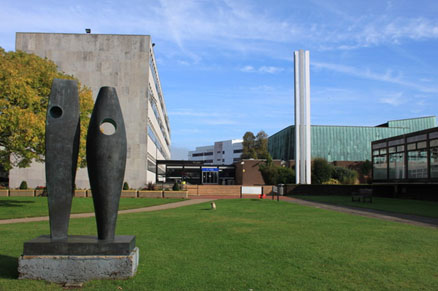
Useful links:
University of Southampton Highfield Campus Information
Southampton City and Region
Conference Secretariat
Abstracts and questions relating to the Conference should be addressed to:
MoViC2016 & RASD2016 Secretariat
ISVR, University of Southampton
Highfield, Southampton, S017 1BJ, UK
Telephone: +44 (0)23 8059 2294
Fax: +44 (0)23 8059 3190
E- mail: movicrasd2016@soton.ac.uk
Website: http://go.soton.ac.uk/movicrasd2016
Call for papers
Abstract submission is now closed.
Full papers in PDF format will be required by 29 January 2016 19 February 2016.
Author Guidelines
- How to submit an abstract on the OCS system
- Journal of Physics templates and guidelines for papers
- How to upload a paper on the OCS system
- How to upload a revised paper on the OCS system
Plenary Keynote Lectures
There will be 5 plenary keynote lectures:
- Prof Roger Goodall, Loghborough University, UK
- Prof Takeshi Mizuno, Saitama University, Japan
- Prof Kevin Murphy, University of Louisville, USA
- Prof David Wagg, University of Sheffield, UK
- Prof Kon-Well Wang, University of Michigan, USA
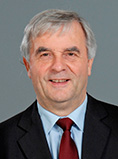 | Professor Roger GoodallLoughborough University, UKProfessor of Control Systems Engineering MA, PhD, FREng, FIMechE, FIET |
Plenary Session Title: Motion and vibration control for railway vehiclesAbstract:Active control of the dynamic characteristics of railway vehicles provides important possibilities for enhanced performance, and is applicable to a variety of vehicle systems: to the secondary suspension for improving ride quality, to the running gear on the bogies for enhanced dynamic characteristics, also to the pantographs which are used to collect electrical power from the overhead wires. The paper will provide an overview of the opportunities and requirements for each application, illustrate them with examples and identify key research challenges. It will conclude with a vision for the design of future railway vehicles and their operation if the full range of motion and vibration control opportunities are exploited. | |
Biography:Roger Goodall spent 14 years in industrial research before he took up an academic position at Loughborough University, where he is currently Professor of Control Systems Engineering. He is also a part-time professor in the Institute of Railway Research at the University of Huddersfield. His research is concerned with a variety of practical applications of advanced control, usually for high performance electro-mechanical systems. Specific projects are concerned with active railway vehicle suspensions, advanced sensor systems for aircraft flight control systems, and advanced concepts for control technology in general. His projects are characterised by strong industrial collaboration, having worked with companies such as Alstom, BAE Systems, Bombardier Transportation, and this is supported by excellent links with universities and research organizations worldwide. | |
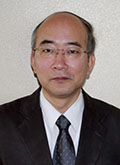 | Professor Takeshi MizunoSaitama University, JapanProfessor, Department Chair of Mechanical Engineering |
Plenary Session Title: Recent advances in magnetic suspension technologyAbstract: The suspension of an object with no visible means is still fascinating to most people. Magnetic suspension utilizes magnetic force for achieving such suspension. There is no contact between stator and object (floator). No mechanical friction and wear is expected in operation even without lubrication. This advantage has already given rise to a lot of industrial applications such as Maglev system, and active magnetic bearing (AMB) for complete contact-free suspension of rotating object. The most successful application is turbo machinery such as turbo-molecular pump. | |
Biography:Takeshi Mizuno is a Professor and the Department Chair of Mechanical Engineering, Saitama University in Saitama, Japan. He received the B.E., M.E., and D.E. degrees from the University of Tokyo in 1978, 1980 and 1985, respectively. He was a Research Associate at the Institute of Industrial Science, the University of Tokyo from 1980 to 1985, and an Assistant Professor at the Polytech University from 1985 to 1988. Since 1988, he has been with the Department of Mechanical Engineering, Saitama University. He stayed at the Swiss Federal Institute of Technology (ETH) Zurich as a gust professor from November in 1990 to October in 1991. | |
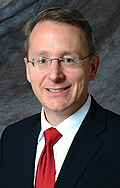 | Professor Kevin MurphyUniversity of Louisville, USA Professor and Chairman, Department of Mechanical Engineering |
Biography:Kevin Murphy is a professor and department chairman of Mechanical Engineering at the University of Louisville. He earned his bachelors and masters degree from the Department of Mechanical Engineering and Applied Mechanics at the University of Michigan. He then earned a Ph.D. from Duke University. He has been a professor at the University of Nebraska and the University of Connecticut, prior to moving to Louisville in 2013. | |
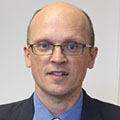 | Professor David WaggUniversity of SheffieldBEng, PhD, CEng, FIMechE Professor of Nonlinear Dynamics Departmental Director of Research and Innovation |
Plenary Session Title: Reducing vibrations in structures using structural controlAbstract: Reducing vibrations in structures using structural control In this presentation three recent developments in structural dynamics which can be used to reduce vibrations will be discussed. All three have the objective of reducing unwanted vibrations in structures. The first is the “tuned-inerter-damper” concept that is analogous to a tuned-mass-damper, but replaces the mass with an inerter. The inerter is an acceleration driven device that has been developed relatively recently. It’s main application area has been the automotive industry, but a much wider variety of applications are currently being investigated. We will present experimental and theoretical results showing how the inerter behaviour can be exploited to reduce structural vibrations. The potential advantages of the tuned-inerter-damper will also be discussed. The second topic discussed in this talk is the combination of active and semi-active control. In this scenario, the active actuator is used to help “assist” the semi-active actuator. The control is implemented using a immersion and invariance control technique, and has applications to railway pantograph systems. The third and final example we will discuss is the idea of using nonlinear spring stiffness to create a lightweight vibration isolator. The nonlinear spring is formed by combining a linear spring with a bistable composite plate. This application is used to increase the isolation effect that can be obtained using just linear stiffnss by creating a nonlinear stiffness function. The concept is sometimes called the “high static low dynamic stiffness” spring. We present numerical and experimental results which show how the transmissibility of the system is improved by designing the nonlinear spring as part of an isolation mount. | |
Biography:David Wagg was awarded his BEng degree and PhD (at the Centre for Nonlinear Dynamics) from University College London. From 1998 until 2000 he was a postdoctoral researcher at the Earthquake Engineering Research Centre at the University of Bristol. | |
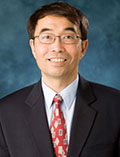 | Professor Kon-Well WangStephen P. Timoshenko Professor and Tim Manganello/BorgWarner Department Chair Department of Mechanical Engineering University of Michigan Ann Arbor, MI U. S. A. |
Plenary Session Title: From Muscles to Plants – Nature-Inspired Adaptive Metastructures for Structural Dynamics EnhancementAbstract: During the past few decades, due to the advances in materials, electronics, and system integration technologies, structural dynamics and controls researchers in various engineering disciplines (e.g., aerospace, civil, mechanical) have been investigating the feasibility of creating adaptive structures. The vision is to develop multifunctional structural systems that have various embedded and distributed autonomous functionalities, such as shape reconfiguration and morphing, materials and mechanical property variations, energy harvesting, vibration and stability controls, and health monitoring and healing. From a structural system point of view, one of the major challenges is on how to best synthesize the cross-field and local-global coupling characteristics of the various adaptive materials and elements to optimize the overall structure performance. It has been recognized that to achieve significant new advances in adaptive structures, researchers have to conduct even more cross talks among various fields and disciplines. In recent years, interesting approaches have been explored to develop mechanical metastructures based on synergistic modular architectures, often observed in nature, such as in biological or atomistic systems. This presentation will discuss some of the recent interdisciplinary research efforts in synthesizing nature-inspired adaptive metastructures for structural dynamics enhancement and applications. | |
Biography:Kon-Well Wang is the Stephen P. Timoshenko Professor and Tim Manganello/BorgWarner Department Chair of Mechanical Engineering at the University of Michigan, in Ann Arbor, MI, U.S.A. He received his Ph.D. degree from the University of California at Berkeley in 1985, worked at the General Motors Research Labs as a Senior Research Engineer, and started his academic career at the Pennsylvania State University in 1988. During his Penn State years, Professor Wang has served as the William E. Diefenderfer Chaired Professor in Mechanical Engineering, Director of the Structural Dynamics and Controls Lab, Associate Director of the Vertical Lift Research Center of Excellence, and Group Leader for the Center for Acoustics and Vibration. Dr. Wang joined the University of Michigan in 2008. | |
Programme
The programme will be available closer to the Conference Dates.
Important Dates
Conference Deadlines | ||
|---|---|---|
| Submission of Abstracts | 17 October 2015 | |
| Acceptance of Abstracts | 15 November 2015 | |
| Submission of Full Papers | 15 February 2016 | |
| Reviewer Feedback | 29 April 2016 | |
| Receipt of Revised Papers | 6 May 2016 | |
| Early registration | 13 May 2016 |
Conference Dates
3-6 July 2016
Venue and Travel Information
Southampton
The conference will be held at the University of Southampton, Highfield, Southampton, UK.
Southampton is the largest city in the county of Hampshire, which resides in southern England. It is a city of medieval origin, located on the estuary of the River Itchen. Thanks to its favourable position it has always been a main centre of trade and its port is one of the most important in the country.
The city is the region’s leisure and cultural capital. With major international events, many new hotels, pubs, clubs, restaurants and close proximity to the New Forest National Park, Southampton is the South’s leading leisure destination.
For more information about the city of Southampton please visit: www.discoversouthampton.co.uk
Conference Venue
The conference will be held at:Building 46: Physics Building
University of Southampton, Highfield Campus
Southampton, UK
SO17 1BJ
Website: data.southampton.ac.uk/building/46.html
Conference Dinner
The social dinner will be held Tuesday 5th of July at:
National Motor Museum
Beaulieu, Brockenhurst, Hampshire, UK
SO42 7ZN
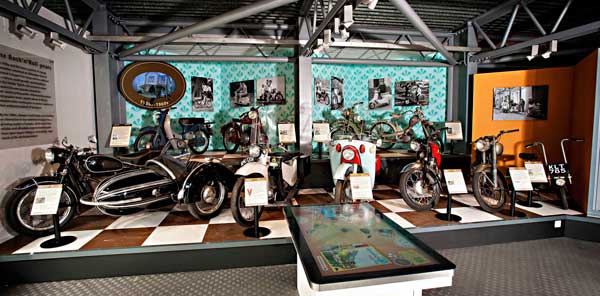
More information about the National Motor Museum is available at: www.beaulieu.co.uk/attractions/national-motor-museum
Travel Information
By Air:
Southampton is about 70 miles from Heathrow International Airport and about 80 miles from Gatwick International Airport.
Southampton International Airport is a few minutes from the Southampton campuses by bus or taxi. There is a full UK domestic service, as well as flights to/from France, Belgium, Holland and Germany.
By Rail:
Trains from London, Gatwick Airport and Bournemouth/Weymouth stop at Southampton Central and Southampton Airport Parkway.
Trains from Portsmouth and Bristol/South Wales stop at Southampton Central.
Bus services link the University with railway stations and Southampton airport.
By Road:
Southampton is about 80 miles from London on the M3 motorway.
Bus Pass:
All registered attendees will recieve a unilink bus pass at registration, which will be valid on Unilink buses in the Soutampton zone for the duration of the conference. Uni link buses connect the University of Southampton Highfield Campus where the conference is being held, the city centre as well as Southampton airport and railway stations. This will allow delegates staying in city centre hotels to reach the conference venue. For more information about the bus service please click here to visit the Unilink website.
More information can be found at: www.discoversouthampton.co.uk and: www.southampton.ac.uk
Guest House List
For a list of hotels and guest houses please refer to this link:
Southampton Guest House List
Please note this List has been compiled for information and inclusion on this list does not constitute a recommendation by the University of a particular establishment.
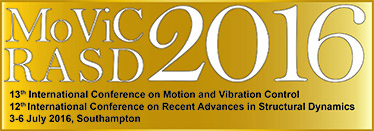 MoViC RASD 2016
MoViC RASD 2016